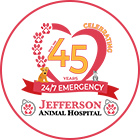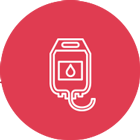

There are two diseases in cats that are directly related to feeding improper diets: heart failure from taurine deficiency and feline urologic syndrome (FUS) or feline lower urinary tract disease (FLUTD). There are probably others that the veterinary community have not yet discovered.
Taurine is an amino acid. Amino acids are the building blocks of protein. As far as we know, all mammals except cats are able to make their own taurine. Several years ago it was discovered that cats must have it provided in their diet. If the diet was deficient in taurine, the heart muscle became weak. Now, most commercial cat foods supplement with taurine.
Feline Urologic Syndrome is a urinary bladder inflammation. A sand that is made of magnesium and phosphorus is produced, similar to the human kidney stone situation. The sand can form a plug and block a male cat’s penis, preventing him from urinating. This is life threatening –making it very important to monitor your male cat’s urinary habits closely. A cat making frequent trips to the litterbox or one that appears to be straining as if constipated are cause for immediate concern.
How Much to Feed:
Kittens are often fed as much as they want (free choice). Although cats tend to become overweight if fed free choice, so follow the feeding instructions on the back of your cats bag of food or by the veterinarian and be sure to provide plenty of exercise.
At about 1 year of age, your cat’s body is mature and his calorie needs are reduced. At this point you should change over to an adult food and make sure to follow the new feeding amounts according to the bag or by your veterinarian and be sure to provide plenty of exercise.
Dry cat food doesn’t necessarily prevent dental tartar! Cats are similar to people in that some will have excellent teeth that need minimal care, and others will need lots of care. Daily or twice weekly “brushing’ is recommended.





